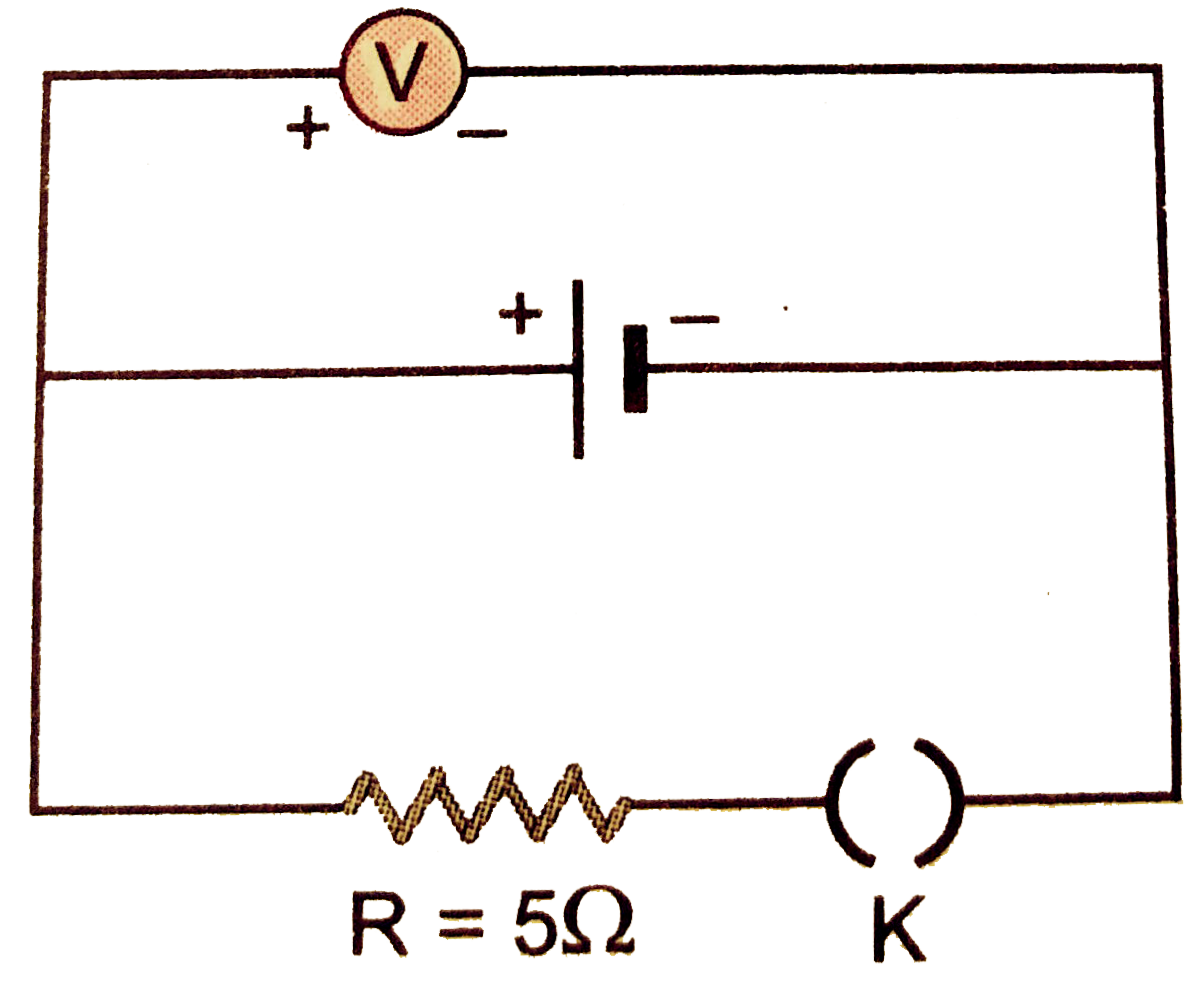When an ammeter of negligible internal resistance is inserted in series with circuit, it reads . When a voltmeter of very large resistance is connected across , it reads . But when the points and are short-circuited by a conducting wire, then the voltmetre measures across the battery. The internal resistance of the battery is equal to

none of these
The correct Answer is:A
or or
When points and are connected by a conducting wire, is short-circuited. Therefore,
or
or
But or
Topper's Solved these Questions
- ELECTRICAL MEASURING INSTRUMENTSBook:CENGAGE PHYSICSChapter:ELECTRICAL MEASURING INSTRUMENTSExercise:Multiple Correct
Explore 7 Videos
- ELECTRICAL MEASURING INSTRUMENTSBook:CENGAGE PHYSICSChapter:ELECTRICAL MEASURING INSTRUMENTSExercise:Assertion-Reasoning
Explore 7 Videos
- ELECTRICAL MEASURING INSTRUMENTSBook:CENGAGE PHYSICSChapter:ELECTRICAL MEASURING INSTRUMENTSExercise:Subjective
Explore 18 Videos
- ELECTRIC POTENTIALBook:CENGAGE PHYSICSChapter:ELECTRIC POTENTIALExercise:DPP 3.5
Explore 14 Videos
- ELECTROMAGENTIC INDUCTIONBook:CENGAGE PHYSICSChapter:ELECTROMAGENTIC INDUCTIONExercise:QUESTION BANK
Explore 40 Videos
Similar Questions
The reading on a high resistance voltmeter when a cell is connected across it is 3 V. When the terminals of the cell are also connected to a resistance of 4 Ω, then the voltmeter reading drops to 1.2 V. Find the internal resistance of the cell.
View SolutionThe reading on a high resistance voltmeter. When a cell is connected across it is 2.2V. When the terminals of the cell are connected to a resistance of 5Ω the voltmeter reading drop to 1.8V. Find the internal resistance of the cell.

View Solution
Knowledge Check
When an ammter of negligible internal resistance is inserted in series with circuit it reads 1A When the voltmeter of very large resistance is connected across X it reads 1V. When the point A and B are shorted by a conducting wire, the voltmeter meausres 10V across the battery. The internal resistance of the battery is equal to
 AzeroB0.5ΩC0.2ΩD0.1Ω
AzeroB0.5ΩC0.2ΩD0.1ΩIn the given circuit, the reading of ideal voltmeter is E/2. The internal resistance of the battery is
 A1ΩB23ΩC25ΩD52Ω
A1ΩB23ΩC25ΩD52ΩA 50V battery is connected across a 10 ohm resistor. The current is 4.5 amperes. The internal resistance of the battery is
AZeroB0.5 ohmC1.1 ohmD5.0 ohm
In the given circuit, an ideal voltmeter connected across the 10Ω resistance reads 2V. The internal resistance r, of each cell is:

View SolutionThe reading on a high resistance voltmeter when a cell is connected across it is 2.2 V. When the terminals of the cell are also connected to a resistance of 5Ω, the voltmeter reading drops to 1.8 V. Find the internal resistance of the cell.
View SolutionWrite any two factors on which internal resistance of a cell depends . The reading on a high resistance voltmeter , when a cell is connected across it , is 2.0 V . When the terminals of the cell are also connected to a resistance of 3Ω as shown in the circuit , the voltmeter reading drops to 1.5 V . Find the internal resistance of the cell.
View SolutionThe reading on a high resistance voltmeter, when a cell is connected across it, is 2.2 V. When a 5 Ω resistance is connected across the terminals of the cell in parallel with the voltmeter, the reading is 1.8 V. Determine the internal resistance of the cell.
View SolutionA battery of emf 3 volt and internal resistance r is connected in series with a resistor of 55Ω through an ammeter of resistance 1Ω. The ammeter reads 50 mA. Draw the circuit diagram and calculate the value of r.
View Solution

